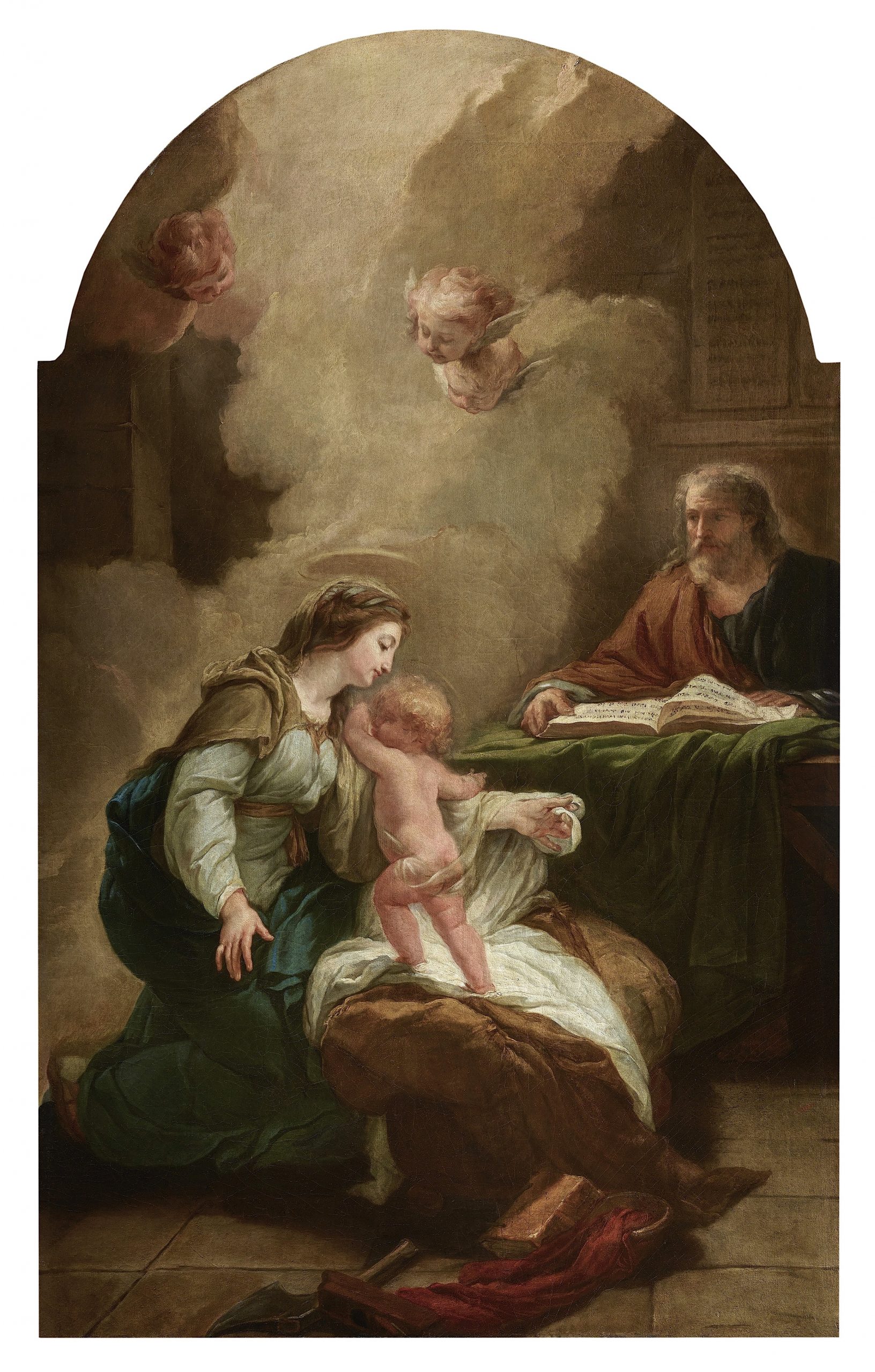(1739 Paris 1821)
The Holy Family
Oil on canvas
151 x 93 cm
Framed : 164,5 x 105,5 cm
Circa 1770
Louis XV style frame
Bibliography: To be included in the Catalogue Raisonné of the artist by Monsieur Joseph Assemat-Tessandier.
It was with his brother, the already well-known and established artist, Louis-Jean-François, that Jean-Jacques Lagrenée began his training. A promising young artist, he entered the drawing school of the Académie but did not continue the academic program there, preferring to follow his brother to Saint Petersburg where Empress Elisabeth entrusted him with the direction of her Academy. The young Jean-Jacques sometimes worked with his brother, doing a number of etchings; at the death of the Empress, both of them returned to France.
He was hoping at any cost to go to Rome, but not having his qualifications from the Académie, it was thanks to the help of his brother and to the support of the Marquis de Marigny that Jean-Jacques Lagrenée was able to leave for Italy. He managed to get a room at Mancini Palace, and even got exceptional permission to take courses for a year.
This visit marked him profoundly, especially because of the discoveries in the archeological digs at Pompeii and Herculaneum. He did many sketches and rubbings at the time, which he engraved and published numerous years after, in 1784, in a collections of plates done after Classical models. With Boizot, Lagrenée was also the creator of the Service Etrusque de la Laiterie de Rambouillet, and of its famous “breast bowl” .
It was during this period that his reputation as a “ceiling painter” was born, after he did several beautiful ceilings in arabesque style in Italy. Lagrenée returned to France in 1769, and several months later was admitted to the Académie. The piece he was assigned for his entry into the Académie makes evident the esteem he in which he was held, since he was asked to execute one of the large cartoons for the Galerie d’Apollon, “Winter” , after Taraval had executed “Autumn.” Lagrenée only finished his submission in 1775, date at which it was exhibited at the Salon before being placed in its position in the Palais du Louvre.
Jean-Jacques Lagrenée received several prestigious religious commissions at the beginning of his career, most of them after his return from Rome. In particular, he executed a Baptism of Christ for the Cathédrale de Tours, in which the golden blond, Correggio-like tones of our Holy Family can already be found. The Charterhouse (monastery) in Paris also commissioned five paintings from him, including Presentation at the Temple, discovered after the Revolution in the chapel of the Grand Trianon. He did two large paintings for the Cathédrale d’Anvers, still in situ, and in 1780, was chosen by Comte d’Angiviller to execute two paintings of a series on the life of Christ for the chapel of the Château de Fontainebleau.
In our Holy Family, we see the frothiness in the drapery so dear to the artist, as well as the colors that are recurrent in his works, like the beautiful olive green of the drapery covering the table, also to be found in the background of his Allegory Relative to the Establishment of the Museum in the Grande Galerie in the Louvre.
As well, the dense, swirling, clouds are part of the artist’s vocabulary, as much in his religious works as in his Fall of the Idols and Resting on the Flight to Egypt (Musée des Beaux Arts, Rennes), as in mythological subjects (Diane and Endymion, private collection).
As in Rest on the Flight to Egypt (fig. 6, private collection) a warm, gentle light bathes our intimate family scene. Both the accumulation of multicolored draperies and the ribbons tied in the Virgin’s hair confer on her a certain elegance despite the simplicity of the only barely suggested surroundings.
Monsieur Joseph Assemat-Tessandier, qui prépare après le catalogue raisonné des œuvres de Louis Lagrenée, celui des œuvres de son frère, Jean-Jacques Lagrenée, nous a confirmé l’attribution de notre tableau, ainsi que sa datation, qu’il situe juste après son retour de Rome, vers 1770.

